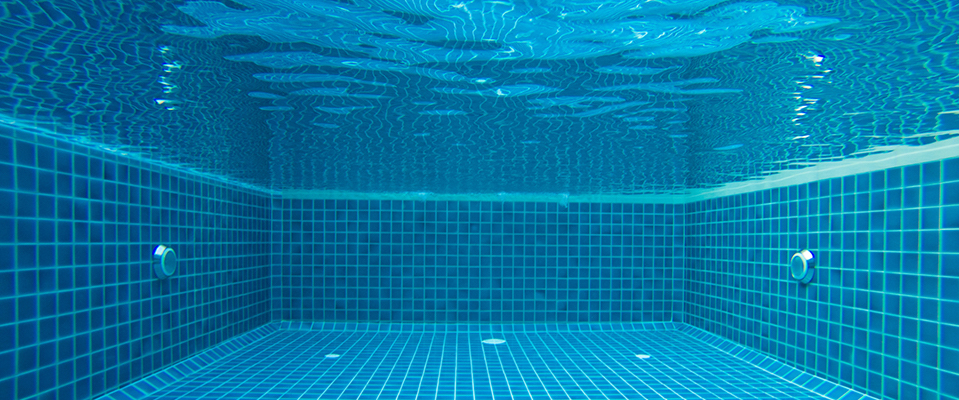For many swimmers, the bracing aroma of swimming-pool chlorine is assurance that pool water is free of disease-causing microbes.
Unfortunately, that summery smell may actually signal troublesome levels of urine, sweat, and body-care products in the water. And according to researchers, bodily fluids in pool water are worse than unsavory—they react with pool disinfectants, forming chemical compounds that may be hazardous to your health.
Chlorine, bromine, and ultraviolet (UV) light effectively protect swimmers against water-borne nasties including E. coli, Salmonella, Cryptosporidium, and Giardia lamblia. But when pool disinfectants encounter free-floating body fluids and lotions, they generate chemical hazards—noxious disinfection by-products (DBPs) that swimmers inhale, swallow, and absorb through the skin.
Urea found in urine and sweat, for example, reacts with chlorine to create the DBP trichloramine, an aggressive oxidant, according to Ernest R. “Chip” Blatchley III, (Berkeley M.S. ’83, PhD ’88), professor of Civil Engineering at Purdue.
“Anecdotally, look at the metal structures at any indoor pool,” Blatchley said. “That corrosion above the waterline is largely caused by chlorine compounds that are able to oxidize even stainless steel. Speaking as a non-medical person, if those gases are able to corrode stainless steel, they’re probably not good for your respiratory system.”
Blatchley has studied chemical reactions triggered by water treatments for more than a decade, using membrane-induced mass spectrometry (MIMS) to identify DBPs in drinking water and the air near swimming pools. MIMS captures volatile chemicals likely to be inhaled by swimmers, pool workers, and people watching their children from the pool deck.
Blatchley’s team routinely finds an array of irritating DBPs drifting through pool water: monochloramine, dichloramine, trichloramine, dichloromethylamine, chloroform, bromoform, dichlorobromomethane, dibromochloromethane, cyanogen chloride, cyanogen bromide, and dichloroacetonitrile.
But MIMS technology only detects DBPs present at concentrations of microgram-per-liter or greater. Researchers using more-sensitive tools say pool air and water is teeming with chemical compounds at lower concentrations, some of which may be the residue of drugs urinated into the water.
Body fluids use up free chlorine in pool water, are not removed by filtration or evaporation, and become more concentrated as water is recirculated.
Volatile DBPs are rapidly released into the air when swimmers churn through the water, and are most concentrated at the surface of the water, where swimmers draw deep breaths.
“MIMS is limited to measuring volatile compounds, and inhalation is the particular focus of the work we’re doing,” Blatchley said. “But there are non-volatile DBPs generated in pools, and other routes of exposure. Some DBPs transfer through the skin, and people drink the water when they swim.”
Small amounts of DBPs are generated when disinfectants disable viruses, bacteria and other microbes, a trade-off necessary to prevent outbreaks of communicable disease. But most DBPs result from urinating in the pool, and poor swimmer hygiene. Body fluids also use up free chlorine in pool water, are not removed by filtration or evaporation, and become more concentrated as water is recirculated.
Many pool treatment systems combine chemical and UV disinfection, pursuing a two-pronged approach where bacteria and viruses are killed by chemicals on contact, and protozoa are neutralized by lights inside a separate reactor. Chlorine and bromine excel at killing bacteria and viruses, and UV light disables giardia and cryptosporidium’s ability to reproduce.
UV lights aren’t used in the pool itself, as the radiation would cause numerous adverse effects including damage to swimmers’ skin and eyes, and increased risk of skin cancer.
Blatchley, a high school swimmer who still hits the pool for exercise, prefers systems that combine chlorine and UV disinfection. While both chlorine and UV treatments produce DBPs, his research shows that a well-managed combination of the two provides a best-practices balance between microbiology and chemistry.
“We recently published a series of papers about the combined use of chlorine and UV,” Blatchley said. “The overall assessment is when they’re used in combination, the chemistry is better than if just chlorine is used. And UV is not likely to be used alone, as it has no residual effectiveness in water.”
Ozone pool disinfection systems are rare due to the complicated and expensive equipment required. And bromine treatments, once a popular replacement for chlorine, are falling out of favor.
“Bromine is analogous to chlorine in many ways, there are many parallels in effect,” he said. “But other researchers have demonstrated that brominated DBPs tend to be more toxic than their chlorinated analogs. And bromine is also more expensive.”
Research has made great strides in identifying DBPs and the chemical interactions that produce them. But the health effects of DBP exposure are harder to pin down, due to a multitude of variables including contamination levels, chemical treatments, whether the pool is indoors or outdoors, workout length, swimmer age (children are more vulnerable) and water temperature (cooler water greatly reduces sweating).
Other unknowns include the effect of drugs excreted in urine, and novel ingredients in lotions and sunscreens.
“My respiratory system gets congested when I swim, and the pools I swim in are the cleanest ones,” Blatchley said.
Even casual swimmers observe that highly chlorinated pool water can turn hair to straw, dissolve swimsuit elastic, redden eyes and spark asthma attacks. Studies also show that DBPs are readily absorbed into swimmers’ bodies, and that toxins build up in the bodies of athletes who swim every day.
Suspicions run high that DBPs are implicated in high rates of asthma among elite swimmers, but a definitive causal link has yet to be established.

“My respiratory system gets congested when I swim, and the pools I swim in are the cleanest ones,” Blatchley said. “We’ve measured them, I know which pools are the cleanest in gory detail.”
The dirtiest pools, ironically, tend to be those where competitive swimmers work out for long hours, but rarely use a toilet. Olympic athletes including Michael Phelps and Ryan Lochte admit to routinely urinating in the pool, and many aspiring athletes say that getting out of the pool to use a toilet is discouraged by coaches.
But as the peer-reviewed evidence on DBPs mounts, and parents of young swimmers become aware of the risks, there is hope that swimming culture will change.
“Our culture has reduced smoking by emphasizing the risks of secondhand smoke, and people now accept that it is rude to smoke in public and that others should not have to breathe your smoke,” Blatchley said. “The same logic applies to the swimming pool.
“Peeing in the pool is entirely preventable,” he said. “And a 60-second shower with no soap will remove the vast majority of skin-associated compounds that cause problems in the pool. If people were to be a little more respectful of other swimmers, and lifeguards, and children, and the moms and dads sitting by the pool, we would see immediate improvements in water and air quality.”
Pool operators can help by posting and enforcing hygiene rules, educating swimmers, locating showers and toilets in convenient locations and keeping water temperatures below 80 degrees.
Swimmers might think twice before jumping into a pool with a strong chemical smell. As a rule, the stronger the smell, the more chemical contaminants are likely present.
Blatchley continues to hope that a spokes-athlete will emerge to encourage good hygiene at public pools.
“I would love to see a high-profile swimmer take on this public health responsibility, and embrace the science,” he said. “That could do a lot of good.”






















